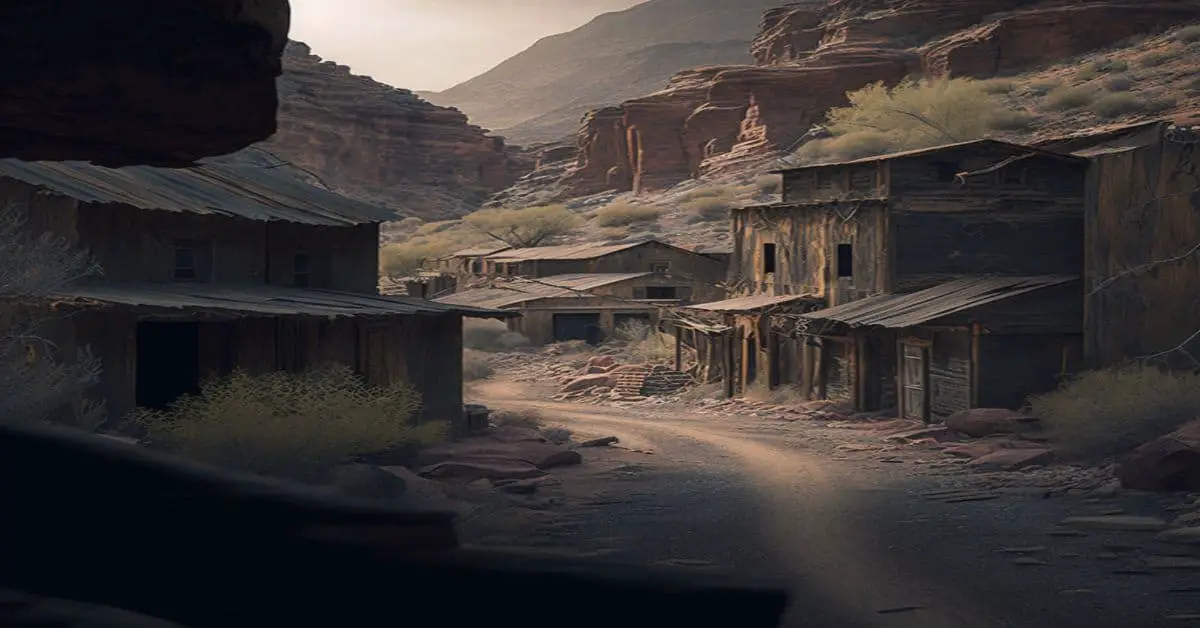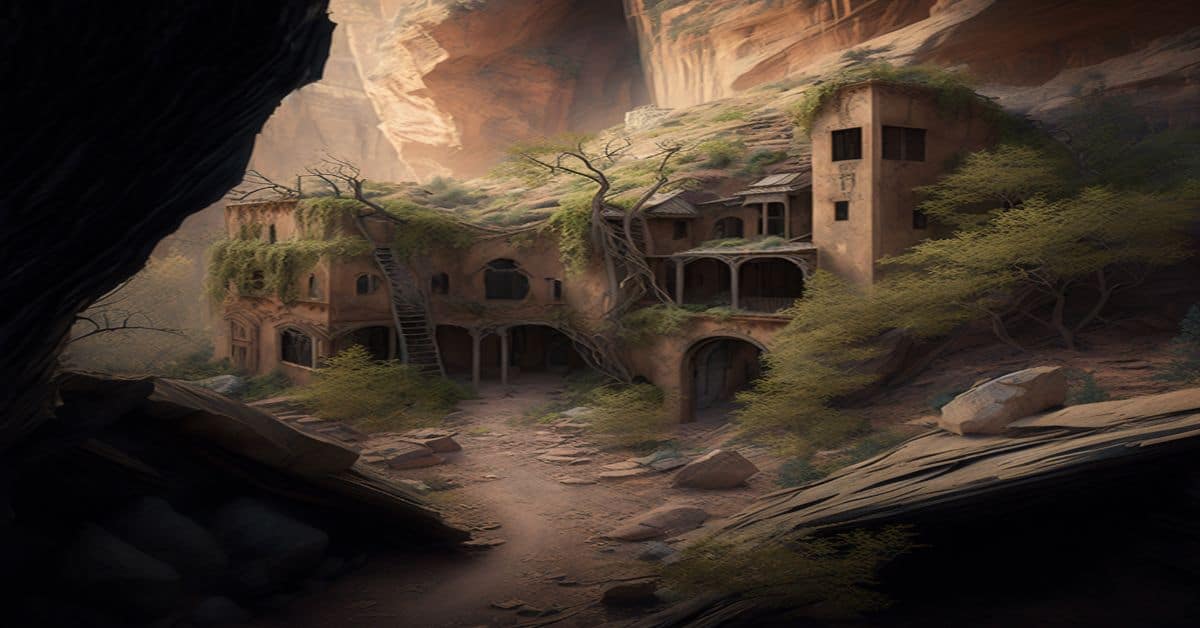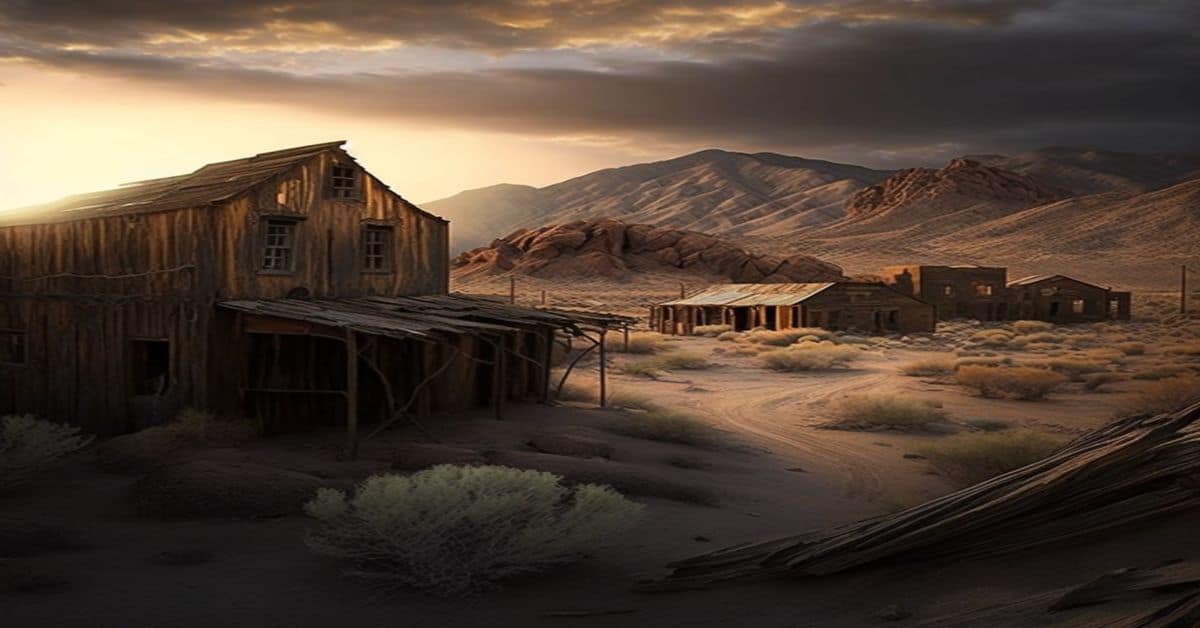Collyer, a small farming community in Kansas, has a history as unique as it is haunting. Founded in the late 1800s, the town was home to a tight-knit community of farmers who persevered through harsh weather conditions and economic hardships. Despite surviving the Dust Bowl and the Great Depression, the town has declined since the early 20th century, leaving behind deserted houses and decaying neighborhoods.
Today, Collyer is a semi-ghost town with over 100 residents, making it a fascinating destination for anyone interested in exploring the remnants of a bygone era. This article explores the town’s history and unique features, including an old frame home, a deserted neighborhood, and a business district. Through an objective and factual lens, it highlights the ongoing efforts to preserve its history and the challenges of maintaining a town that has been slowly fading away for over a century.
Whether you’re a history buff, a curious traveler, or a resident, Discovering Collyer: A Haunting Semi-Ghost Town offers a fascinating glimpse into a town that has survived against all odds.
Key Takeaways
- Collyer is a small farming community in Kansas founded in the late 1800s by Rev. Robert Collyer.
- The town has survived harsh weather conditions, the Dust Bowl, and the Great Depression but has declined since the early 20th century due to frequent crop losses caused by hot, dry summers.
- Despite the challenges, Collyer’s residents have shown remarkable resilience and perseverance, with ongoing efforts to preserve historical sites and contributions of individuals who have shared their perspectives on the town’s history and struggles.
- Notable features of the semi-ghost town include an old frame home, decaying house, deserted neighborhood, St. Michael’s Catholic School undergoing renovation as a historical site, and a car shop and business district on Ainslee Avenue.
Location and History
Located in Kansas, the small farming community of Collyer was founded in the late 19th century by a Unitarian minister, Rev. Robert Collyer. Despite its promising beginnings, the town experienced frequent crop losses due to hot, dry summers, ultimately leading to its population decline and semi-ghost town status.
Today, visitors to Collyer can still witness the remnants of its past, with deserted houses and neighborhoods scattered throughout the town. Despite its decline, Collyer still holds onto Rev. Robert Collyer’s legacy, with the oldest remaining home in the town undergoing historical preservation.
Additionally, modern-day attractions in Collyer include the renovation of St. Michael’s Catholic School as a historical site, the car shop at 4th and Ainslie Avenue, and a business district on Ainslee Avenue.
The sign reading ‘Kansas Heritage Trust Fund Collyer’ also serves as a reminder of the town’s rich history and the efforts to preserve it for future generations.
Town Features
The old frame home, decaying house, and deserted neighborhood are notable features of Collyer, along with the undergoing historic preservation efforts at the oldest remaining home and St. Michael’s Catholic School.
These abandoned homes and neighborhoods offer a glimpse into the town’s history and struggles, such as frequent crop losses due to hot, dry summers.
The oldest remaining home, originally built from sod before wood siding was added, is undergoing preservation efforts to maintain its historical significance.
St. Michael’s Catholic School, which closed in the 1970s, is also undergoing renovation as a historical site.
In addition to the abandoned homes and historical preservation efforts, Collyer has a car shop at 4th and Ainslie Avenue and a business district on Ainslee Avenue.
However, the town is mostly deserted, with over 100 residents and much of the town in a state of abandonment.
Despite its decline in population since the Dust Bowl and the great depression, Collyer remains a haunting semi-ghost town that offers a unique glimpse into the area’s history.
Crop Losses and Contributor
Frequent crop losses due to hot, dry summers were a major challenge for the small farming community of Collyer, Kansas, which has been declining in population since the Dust Bowl and the great depression. Diddley Squat, who submitted information about the town, highlights Collyer’s struggles as a valuable lesson about the harsh realities of agriculture in the area. The town’s agricultural struggles remind us of the importance of community resilience in adversity.
Despite the challenges, Collyer’s residents have shown remarkable resilience and perseverance. The town has survived the Dust Bowl and great depression and continues to maintain a population of over 100 residents. While much of the town is abandoned, there are ongoing efforts to preserve and renovate historical sites, such as the oldest remaining home and St. Michael’s Catholic School.
The contributions of Diddley Squat and other individuals who have shared their perspectives on the town’s history and struggles serve as important reminders of the resilience and determination of Collyer’s community.
Frequently Asked Questions
Are there any ghost stories or supernatural legends associated with Collyer?
No reports of ghostly sightings or local folklore are associated with Collyer, Kansas. Crop losses and population decline mark the town’s history, but no evidence of supernatural activity exists.
What industries or businesses sustained the town in its early years?
Collyer, Kansas, was founded in the late 19th century as a small farming community sustained by agriculture and natural resources. Railroad expansion and early businesses contributed to the town’s economic growth and development.
How has the population decline affected the town’s infrastructure and services?
The population decline in Collyer has impacted the local economy, resulting in challenges for the remaining residents. Infrastructure and services have suffered, with deserted neighborhoods and decaying houses. The town’s survival remains uncertain.
Are there any notable residents or historical figures associated with Collyer?
No notable residents or historical figures associated with Collyer, Kansas, have been mentioned in the provided background information.
Are there any plans or initiatives to revitalize the town and attract new residents?
Despite economic challenges, no current plans or initiatives are in place to revitalize Collyer and attract new residents. Community engagement may be necessary to address the town’s declining population and abandoned buildings.


